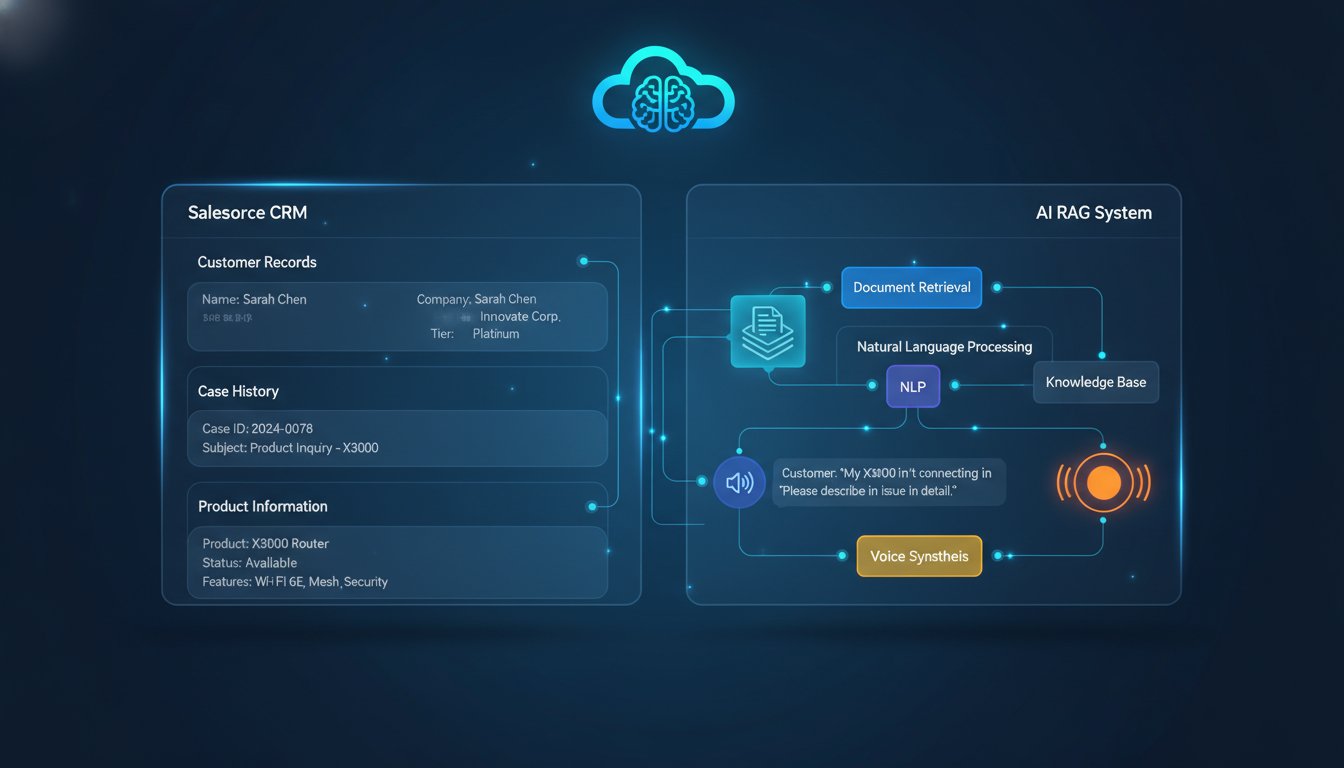Modern AI applications demand real-time intelligence. When a customer service agent needs instant access to product knowledge, or when a financial analyst requires immediate market insights, traditional RAG systems with batch processing and delayed indexing simply can’t keep up. The enterprise reality is stark: while most RAG implementations focus on accuracy, they completely ignore the critical dimension of speed and real-time data processing.
Consider this scenario: A Fortune 500 company’s customer support system processes thousands of queries per minute, but their RAG system takes 3-5 seconds to retrieve and generate responses from a knowledge base that’s updated every hour. Meanwhile, their competitors are responding in milliseconds with information that’s current to the second. This isn’t just a performance gap—it’s a competitive disadvantage that compounds with every interaction.
The solution lies in streaming RAG architectures powered by Redis Vector Search, a technology that transforms how we think about real-time knowledge retrieval. Unlike traditional vector databases that batch process updates, Redis enables continuous streaming of both data ingestion and query processing, creating a RAG system that operates at the speed of business.
In this comprehensive guide, we’ll build a production-ready streaming RAG system that processes documents in real-time, maintains sub-second query response times, and scales to handle enterprise workloads. You’ll learn how to implement continuous data pipelines, optimize vector search for streaming scenarios, and deploy a system that keeps pace with your business requirements.
Understanding the Streaming RAG Architecture
Traditional RAG systems operate in distinct phases: data ingestion, processing, indexing, and querying. This batch-oriented approach creates inherent delays and prevents real-time responsiveness. Streaming RAG fundamentally restructures this workflow into a continuous pipeline where data flows seamlessly from source to response.
The core architecture consists of three primary components working in concert. The streaming ingestion layer captures data changes in real-time using change data capture (CDC) patterns, webhook integrations, and message queue systems. This layer ensures that every document update, new file upload, or content modification immediately enters the processing pipeline.
Redis Vector Search serves as the central nervous system, providing both vector storage and real-time search capabilities. Unlike purpose-built vector databases that excel at batch operations, Redis combines traditional caching with vector operations, enabling microsecond-level response times for both data updates and similarity searches.
The streaming processing engine handles document chunking, embedding generation, and index updates without interrupting ongoing queries. This component uses asynchronous processing patterns to maintain system responsiveness while ensuring data consistency across concurrent operations.
Redis Vector Search Advantages for Streaming
Redis brings unique capabilities to streaming RAG implementations that traditional vector databases struggle to match. Its in-memory architecture delivers consistent sub-millisecond query performance, even under heavy concurrent loads. This speed advantage becomes critical when processing hundreds of queries per second while simultaneously ingesting new documents.
The persistence model offers the perfect balance for streaming scenarios. Redis maintains data durability through configurable persistence options while keeping active datasets in memory for instant access. This hybrid approach eliminates the cold start problems common in disk-based vector databases.
Redis Streams, a built-in data structure, provides native support for real-time data pipelines. This feature enables elegant handling of document processing workflows, consumer group management, and failure recovery without external message queue systems.
Building the Core Streaming Infrastructure
Implementing a streaming RAG system begins with establishing robust data ingestion pipelines that capture changes across your content ecosystem. This foundation determines whether your system achieves true real-time performance or merely faster batch processing.
Setting Up Redis with Vector Search
The initial Redis configuration requires careful attention to memory management and persistence settings. Install Redis Stack, which includes the RediSearch module necessary for vector operations:
docker run -d --name redis-stack \
-p 6379:6379 -p 8001:8001 \
-v redis-data:/data \
redis/redis-stack:latest
Configure Redis for production streaming workloads by adjusting memory policies and persistence settings. The allkeys-lru eviction policy ensures optimal memory utilization during high-throughput scenarios, while appendonly persistence provides crash recovery without significant performance impact.
Create the vector index schema optimized for your document types and query patterns. The schema design directly impacts both ingestion speed and query performance:
import redis
from redis.commands.search.field import VectorField, TextField, NumericField
from redis.commands.search.indexDefinition import IndexDefinition, IndexType
r = redis.Redis(host='localhost', port=6379, decode_responses=True)
# Define vector field for embeddings
vector_field = VectorField(
"embedding",
"HNSW",
{
"TYPE": "FLOAT32",
"DIM": 1536, # OpenAI embedding dimension
"DISTANCE_METRIC": "COSINE",
"INITIAL_CAP": 20000,
"M": 40,
"EF_CONSTRUCTION": 200
}
)
# Create comprehensive schema
schema = [
TextField("content"),
TextField("source"),
NumericField("timestamp"),
vector_field
]
# Create index with optimized settings
index_def = IndexDefinition(
prefix=["doc:"],
index_type=IndexType.HASH
)
r.ft("documents").create_index(schema, definition=index_def)
Implementing Real-Time Document Processing
The document processing pipeline must handle concurrent ingestion while maintaining embedding quality and system responsiveness. Design the processor using asynchronous patterns that prevent blocking operations:
import asyncio
import hashlib
from typing import List, Dict, Any
from openai import AsyncOpenAI
from datetime import datetime
class StreamingDocumentProcessor:
def __init__(self, redis_client, openai_client):
self.redis = redis_client
self.openai = openai_client
self.chunk_size = 1000
self.chunk_overlap = 200
async def process_document_stream(self, document_stream):
"""Process documents from a continuous stream"""
async for document in document_stream:
await self.process_single_document(document)
async def process_single_document(self, document: Dict[str, Any]):
"""Process individual document with chunking and embedding"""
# Generate document hash for deduplication
doc_hash = hashlib.md5(document['content'].encode()).hexdigest()
# Check if document already processed
if await self.is_document_processed(doc_hash):
return
# Chunk document content
chunks = self.chunk_document(document['content'])
# Process chunks concurrently
tasks = [
self.process_chunk(chunk, document, i, doc_hash)
for i, chunk in enumerate(chunks)
]
await asyncio.gather(*tasks)
# Mark document as processed
await self.mark_document_processed(doc_hash)
async def process_chunk(self, chunk: str, document: Dict, chunk_id: int, doc_hash: str):
"""Process individual chunk with embedding generation"""
try:
# Generate embedding
embedding_response = await self.openai.embeddings.create(
model="text-embedding-ada-002",
input=chunk
)
embedding = embedding_response.data[0].embedding
# Store in Redis
chunk_key = f"doc:{doc_hash}:{chunk_id}"
chunk_data = {
"content": chunk,
"source": document.get('source', 'unknown'),
"timestamp": datetime.now().timestamp(),
"embedding": self.serialize_embedding(embedding)
}
# Atomic update to prevent race conditions
pipe = self.redis.pipeline()
pipe.hset(chunk_key, mapping=chunk_data)
pipe.expire(chunk_key, 86400) # 24 hour TTL
await pipe.execute()
except Exception as e:
# Log error and continue processing
print(f"Error processing chunk {chunk_id}: {e}")
def serialize_embedding(self, embedding: List[float]) -> bytes:
"""Serialize embedding for Redis storage"""
import struct
return struct.pack(f'{len(embedding)}f', *embedding)
Implementing High-Performance Query Processing
Query processing in streaming RAG systems requires balancing response speed with result relevance. The goal is maintaining sub-second response times while searching across continuously updating document collections.
Optimized Vector Search Implementation
Redis vector search performance depends heavily on query structure and index configuration. Implement search patterns that leverage Redis’s strengths while avoiding common performance pitfalls:
class StreamingRAGQuerier:
def __init__(self, redis_client, openai_client):
self.redis = redis_client
self.openai = openai_client
async def query(self, question: str, limit: int = 5) -> List[Dict]:
"""Execute semantic search with optimized performance"""
# Generate query embedding
query_embedding = await self.generate_query_embedding(question)
# Construct optimized search query
search_query = self.build_vector_query(query_embedding, limit)
# Execute search with timing
start_time = datetime.now()
results = await self.execute_search(search_query)
search_time = (datetime.now() - start_time).total_seconds()
# Process and rank results
processed_results = await self.process_search_results(results)
return {
"results": processed_results,
"search_time": search_time,
"total_results": len(processed_results)
}
def build_vector_query(self, embedding: List[float], limit: int) -> str:
"""Build optimized vector search query"""
# Serialize embedding for search
embedding_bytes = struct.pack(f'{len(embedding)}f', *embedding)
# Construct query with performance optimizations
query = (
f"*=>[KNN {limit} @embedding $embedding AS score]"
f"=>{{$yield_distance_as: score}}"
)
return query
async def execute_search(self, query: str) -> List[Dict]:
"""Execute Redis search with proper error handling"""
try:
search_params = {
"embedding": embedding_bytes
}
results = self.redis.ft("documents").search(
query,
query_params=search_params
)
return [doc.__dict__ for doc in results.docs]
except Exception as e:
print(f"Search error: {e}")
return []
Response Generation with Context Management
Effective response generation requires careful context management to maintain coherent responses while processing results from distributed searches:
class ContextualResponseGenerator:
def __init__(self, openai_client, max_context_length: int = 4000):
self.openai = openai_client
self.max_context_length = max_context_length
async def generate_response(self, question: str, search_results: List[Dict]) -> str:
"""Generate contextual response from search results"""
# Build optimized context
context = self.build_context(search_results)
# Construct prompt with proper formatting
prompt = self.build_response_prompt(question, context)
# Generate response with streaming
response = await self.openai.chat.completions.create(
model="gpt-4",
messages=[
{
"role": "system",
"content": "You are a helpful assistant that answers questions based on provided context."
},
{
"role": "user",
"content": prompt
}
],
max_tokens=500,
temperature=0.1,
stream=True
)
# Stream response for real-time user experience
full_response = ""
async for chunk in response:
if chunk.choices[0].delta.content:
full_response += chunk.choices[0].delta.content
yield chunk.choices[0].delta.content
return full_response
def build_context(self, results: List[Dict]) -> str:
"""Build optimized context from search results"""
context_parts = []
current_length = 0
# Sort results by relevance score
sorted_results = sorted(
results,
key=lambda x: float(x.get('score', 0)),
reverse=True
)
for result in sorted_results:
content = result.get('content', '')
# Check if adding this content exceeds limit
if current_length + len(content) > self.max_context_length:
# Truncate if necessary
remaining_space = self.max_context_length - current_length
if remaining_space > 100: # Minimum viable content
content = content[:remaining_space] + "..."
context_parts.append(content)
break
context_parts.append(content)
current_length += len(content)
return "\n\n---\n\n".join(context_parts)
Production Deployment and Scaling Strategies
Deploying streaming RAG systems in production requires careful attention to scalability, reliability, and monitoring. The system must handle variable loads while maintaining consistent performance across all components.
Container Orchestration and Load Balancing
Deploy the system using Kubernetes to enable automatic scaling and fault tolerance. The deployment strategy should separate concerns while maintaining tight integration between components:
apiVersion: apps/v1
kind: Deployment
metadata:
name: streaming-rag-api
spec:
replicas: 3
selector:
matchLabels:
app: streaming-rag-api
template:
metadata:
labels:
app: streaming-rag-api
spec:
containers:
- name: api
image: streaming-rag:latest
ports:
- containerPort: 8000
env:
- name: REDIS_URL
value: "redis://redis-cluster:6379"
- name: OPENAI_API_KEY
valueFrom:
secretKeyRef:
name: openai-secret
key: api-key
resources:
requests:
memory: "512Mi"
cpu: "250m"
limits:
memory: "1Gi"
cpu: "500m"
livenessProbe:
httpGet:
path: /health
port: 8000
initialDelaySeconds: 30
periodSeconds: 10
Monitoring and Performance Optimization
Implement comprehensive monitoring to track system performance and identify optimization opportunities. Focus on metrics that directly impact user experience:
class StreamingRAGMonitor:
def __init__(self, redis_client):
self.redis = redis_client
self.metrics = {
"query_latency": [],
"embedding_generation_time": [],
"document_processing_rate": 0,
"active_connections": 0
}
async def track_query_performance(self, query_time: float, result_count: int):
"""Track query performance metrics"""
# Store in Redis for real-time dashboards
timestamp = datetime.now().timestamp()
metrics_data = {
"timestamp": timestamp,
"query_time": query_time,
"result_count": result_count
}
# Use Redis streams for metrics collection
await self.redis.xadd(
"metrics:queries",
metrics_data,
maxlen=10000 # Keep last 10k metrics
)
async def get_performance_summary(self) -> Dict:
"""Generate real-time performance summary"""
# Query recent metrics
recent_queries = await self.redis.xrevrange(
"metrics:queries",
count=1000
)
if not recent_queries:
return {"status": "no_data"}
query_times = [
float(entry[1]['query_time'])
for entry in recent_queries
]
return {
"avg_query_time": sum(query_times) / len(query_times),
"p95_query_time": sorted(query_times)[int(len(query_times) * 0.95)],
"total_queries": len(query_times),
"system_status": "healthy" if sum(query_times) / len(query_times) < 1.0 else "degraded"
}
Building a streaming RAG system with Redis Vector Search represents a fundamental shift from batch-oriented to real-time AI architectures. The combination of Redis’s in-memory performance, native streaming capabilities, and vector search functionality creates a platform capable of enterprise-scale real-time intelligence.
The implementation approach outlined here—focusing on asynchronous processing, optimized search patterns, and comprehensive monitoring—provides the foundation for systems that can process thousands of documents per minute while maintaining sub-second query response times. This isn’t just a technical improvement; it’s a competitive advantage that enables truly responsive AI applications.
As you implement this architecture in your organization, start with a focused use case that demonstrates clear business value, then expand the system to handle additional document types and query patterns. The streaming RAG paradigm will fundamentally change how your teams interact with organizational knowledge, transforming static information repositories into dynamic, real-time intelligence platforms that grow smarter with every interaction.
Ready to implement streaming RAG in your organization? Start by setting up the Redis Vector Search foundation using the code examples provided, then gradually add your document sources to create a system that delivers real-time intelligence at enterprise scale.




